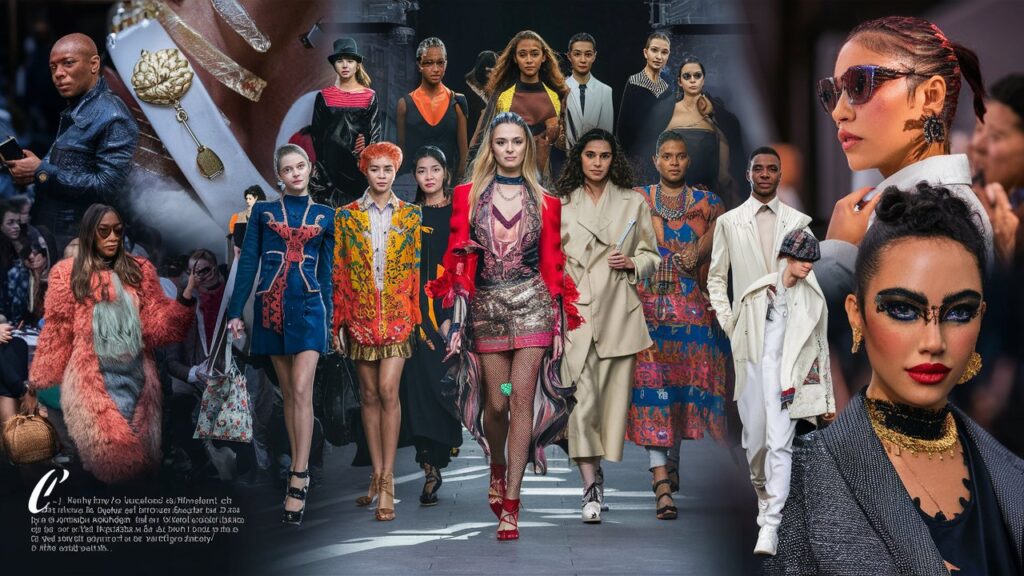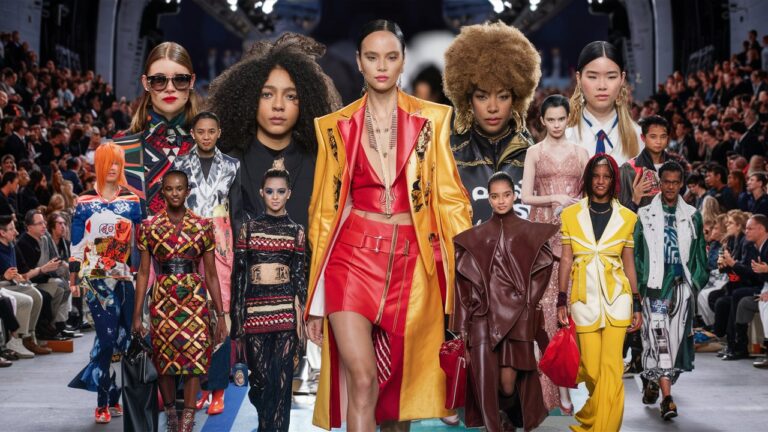Introduction
New York Fashion Week (NYFW) is more than just a biannual event; it’s a global cultural phenomenon that sets the tone for the fashion industry. Since its inception in 1943, NYFW has evolved from an exclusive gathering of elite designers and buyers to a sprawling spectacle that blends art, commerce, and celebrity. Held in February and September each year, the event showcases the latest collections from established brands and emerging talents, while attracting influencers, media, and fashion enthusiasts from around the world. Beyond the glitz of the runway, NYFW reflects societal shifts, champions diversity, and sparks conversations about sustainability and innovation. In this article, we explore the multifaceted layers of NYFW, from its historical roots to its modern-day influence, and answer key questions about its enduring legacy.
1. The Evolution of New York Fashion Week: From Elite Event to Global Phenomenon
New York Fashion Week began as “Press Week,” organized by publicist Eleanor Lambert to spotlight American designers during World War II, when European fashion was inaccessible. Over decades, it expanded beyond its original purpose, transitioning from intimate showrooms to grand runway spectacles. The 1990s marked a turning point, as supermodels like Naomi Campbell and designers like Calvin Klein turned NYFW into a media sensation. Today, the event is democratized through live streams and social media, allowing global audiences to engage in real time. The Council of Fashion Designers of America (CFDA) now oversees NYFW, ensuring it remains a platform for innovation while honoring its roots.
2. Behind the Scenes: The Anatomy of a NYFW Runway Show
A NYFW runway show is a meticulously orchestrated production. Months of preparation go into selecting venues like Spring Studios or the iconic Lincoln Center, designing collections, and coordinating hair, makeup, and music. Designers collaborate with stylists and casting directors to curate diverse models who embody their vision. The backstage chaos—a flurry of last-minute adjustments, interviews, and rehearsals—contrasts sharply with the polished final presentation. Each 10–15-minute show is a narrative, blending fashion with storytelling. For emerging designers, securing a NYFW slot is a career milestone, offering exposure to buyers and critics. Meanwhile, established brands use the platform to reinforce their cultural relevance.
3. Trends Born on the Runway: How NYFW Shapes Global Fashion
NYFW is a trendsetting powerhouse. From athleisure’s rise (pioneered by brands like Alexander Wang) to the resurgence of Y2K aesthetics, the runway dictates what fills retail shelves. Sustainability has also taken center stage, with designers like Stella McCartney and Collina Strada championing eco-friendly materials. In recent years, gender-fluid fashion and inclusive sizing have disrupted traditional norms, reflecting broader societal shifts. Tech innovations, such as digital fashion shows and NFT-integrated collections, are redefining how audiences interact with brands. These trends ripple beyond fashion, influencing interior design, advertising, and pop culture.
4. NYFW’s Cultural Impact: Beyond Clothes and Catwalks
NYFW transcends fashion by amplifying social and political dialogues. Designers use their collections to address issues like racial justice, climate change, and LGBTQ+ rights. In 2020, Pyer Moss’s Kerby Jean-Raymond dedicated his show to Black resilience, while Christian Siriano’s inclusive casting challenged industry beauty standards. Celebrities like Rihanna and Zendaya leverage their front-row presence to promote collaborations or philanthropic causes. Meanwhile, NYFW’s economic impact on New York City is staggering, generating over $500 million annually and supporting jobs in hospitality, media, and retail. The event also fuels street style culture, turning sidewalks into impromptu stages for self-expression.

5. Criticisms and Challenges: The Dark Side of Fashion’s Biggest Week
Despite its glamour, NYFW faces scrutiny. Critics highlight its environmental footprint, with thousands of attendees flying in and single-use set designs contributing to waste. The industry’s lack of diversity, particularly in leadership roles, remains a concern, though progress is slow. Exclusivity is another issue: while digital access has grown, front-row seats are still reserved for A-listers, leaving smaller designers struggling for visibility. Additionally, the grueling pace of the fashion calendar raises questions about burnout and overconsumption. Initiatives like the “See Now, Buy Now” model and seasonless collections aim to address these challenges, but systemic change is still evolving.
6. The Future of NYFW: Innovation and Inclusivity in a Post-Pandemic World
The COVID-19 pandemic forced NYFW to reimagine itself, with virtual shows and 3D avatars replacing physical events. Hybrid formats are likely here to stay, blending immersive digital experiences with intimate in-person gatherings. Augmented reality (AR) filters and blockchain technology for authentication are poised to revolutionize how consumers engage with fashion. Meanwhile, Gen Z’s demand for authenticity is pushing brands to prioritize transparency and ethical practices. As NYFW adapts, its role as a cultural barometer—reflecting and shaping the zeitgeist—will remain vital.
Conclusion
New York Fashion Week is a microcosm of the ever-evolving fashion industry, balancing tradition with innovation. It celebrates creativity, drives economic growth, and mirrors societal values, from inclusivity to sustainability. While challenges persist, NYFW’s ability to reinvent itself—whether through digital runways or activist-driven collections—ensures its relevance in a rapidly changing world. As audiences demand more accountability and connection, NYFW will continue to be not just a showcase of trends, but a platform for progress.
Frequently Asked Questions (FAQs)
Q1: When is New York Fashion Week held each year?
NYFW occurs twice annually, in February (showcasing fall/winter collections) and September (spring/summer collections).
Q2: Can the public attend NYFW runway shows?
Most shows are invite-only for industry professionals, but some brands offer public tickets or livestreams. Emerging designers often host open events to build their audience.
Q3: Who are the most influential designers at NYFW?
Legacy brands like Marc Jacobs, Ralph Lauren, and Tom Ford dominate, but rising stars like Telfar Clemens and Christopher John Rogers are gaining acclaim for their fresh perspectives.
Q4: How does NYFW impact New York City’s economy?
The event generates over $500 million yearly, boosting tourism, retail, and hospitality sectors. Hotels, restaurants, and local businesses thrive during the week.
Q5: What steps is NYFW taking toward sustainability?
Designers are adopting eco-friendly materials, while organizations like the CFDA promote carbon-neutral initiatives. Rental services and digital shows also reduce waste.
This comprehensive guide captures the essence of NYFW, offering insights for fashion novices and industry insiders alike. Whether you’re drawn to the artistry or the activism, NYFW remains a cornerstone of global culture.
